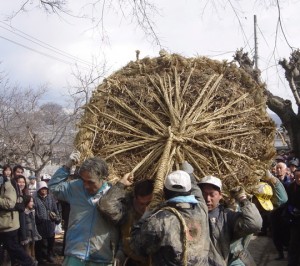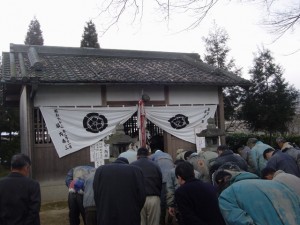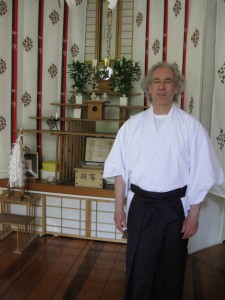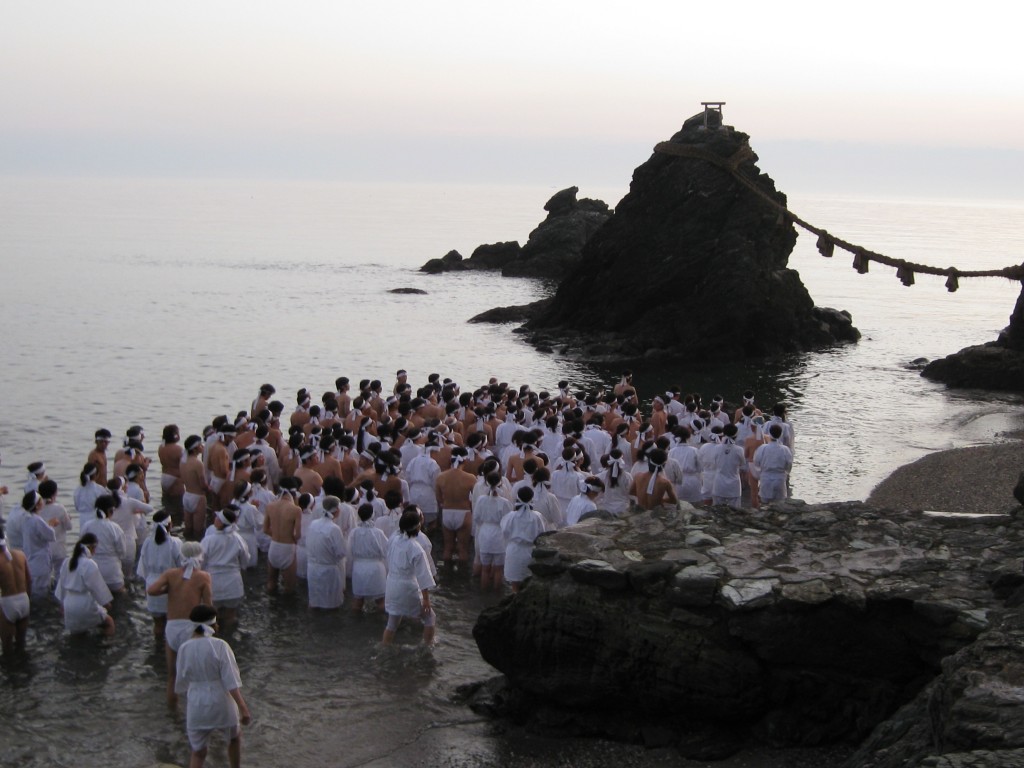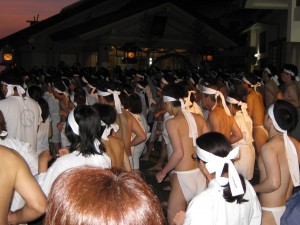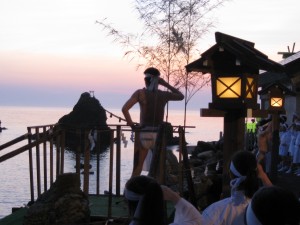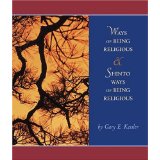Feb 11 was a national holiday in Japan in honour of Japan’s legendary founder-emperor, Jimmu. My friend rang me up in the morning and suggested going to a fertility festival. I did not realise it, but it happened to take place right in the heart of ancient Yamato, in villages surrounded by the tumuli of Japan’s early rulers.
The Tsuna Matsuri (rope festival) was very much the real thing. Two neighbouring villages enact ancient rites going back into the mists of time. One of the village shrines houses a female kami, and the parishioners drag a heavy rope construction over to the next village, where there is a shrine with a male kami.
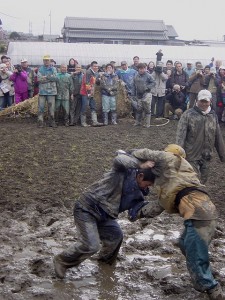
Sumo wrestling, fertility style
Sumo wrestling
The festival begins with sumo wrestling between sturdy youths in a rice field in a specially watered circle that consisted of very, very thick mud. The guys wrestling were just village folk in old clothes, and when they finished they were covered head to foot in mud. The final pair had shaved their heads and gave each other a head bath before they started. When they came out they were soiled in thick mud all over, with just a white patch for the eyes. This was all accompanied with liberal amounts of saké, and there was even thin snow falling out of a blue sky to add to the atmosphere. The festival had got off to an earthy start…
Male and female organs
The main event was the stringing up of the female organ. A long rope extending from the back was strung over a river and tied to a tree. The male organ was then carried over the fields, its tail unravelled and stretched over several trees and into the rice fields. Then it was rammed into the female, before the entwined couple was strung up to hang for the rest of the year as a spur to a successful rice harvest. The complications of unravelling the long ropes – thickly wrapped rice plants some 100 metres in length – made one marvel at the sophistication with which they had been put together. Almost a work of art in itself.
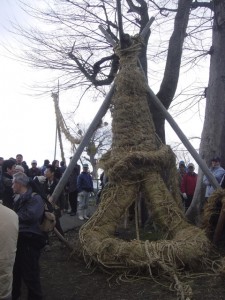
The female
The whole event necessitated some fifty people, with groups to carry the heavy rope objects, others
sitting up in trees to thread the rope through, and yet others stitching the two objects together. At one stage I was talking to a man I thought was a priest, but the nearby women hastily told me he was only dressed up in priest’s clothes to act for the day as the ‘go-between’ or marriage priest of the male-female rope organs. Almost like the jester in the English folk tradition.
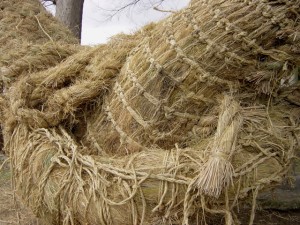
Penetration
One felt here the true spirit of Shinto: a friendly drunken community event rooted in the rites of the land. All the mud besotted labourers took part afterwards for a short service in front of the small shrine (dedicated to Susanoo no mikoto), followed by a naorai feast. A genuinely good time was had by all!
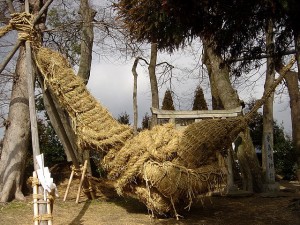
Part of the scenery

